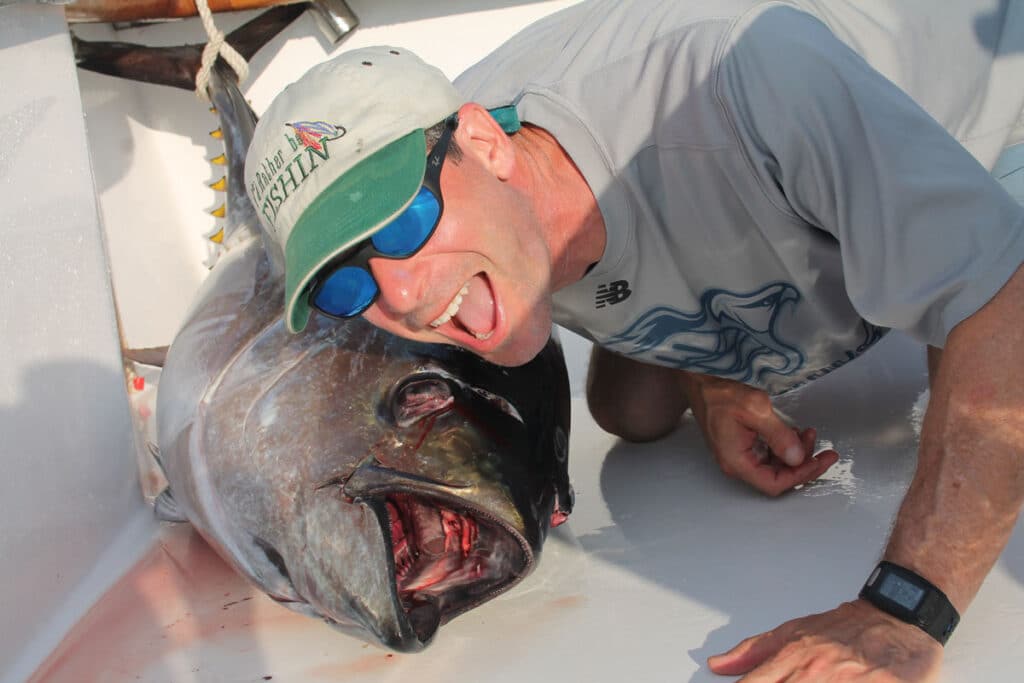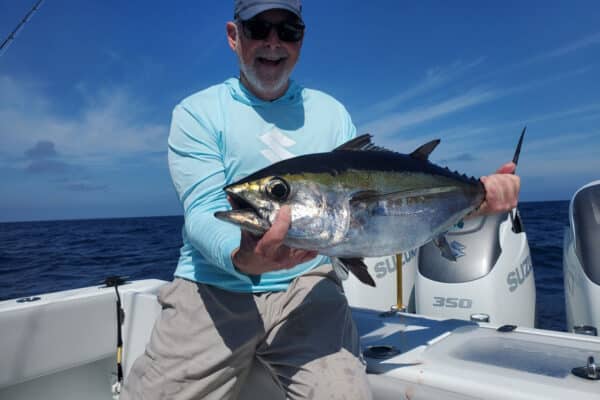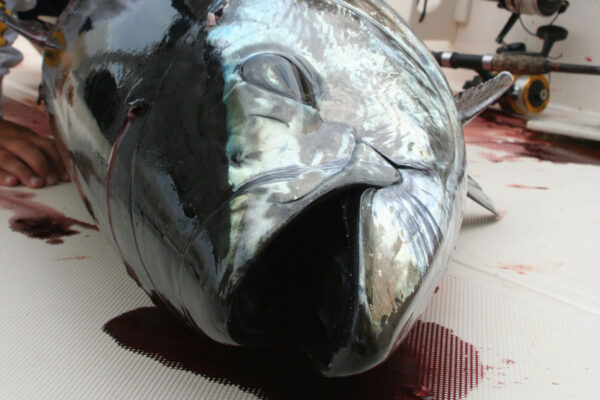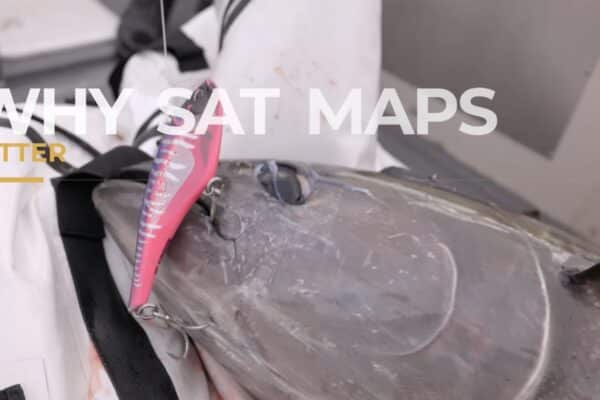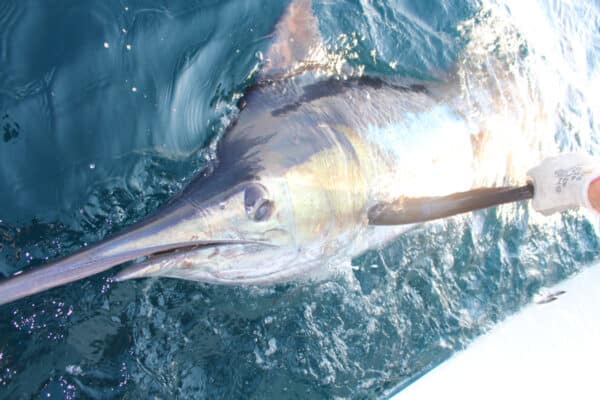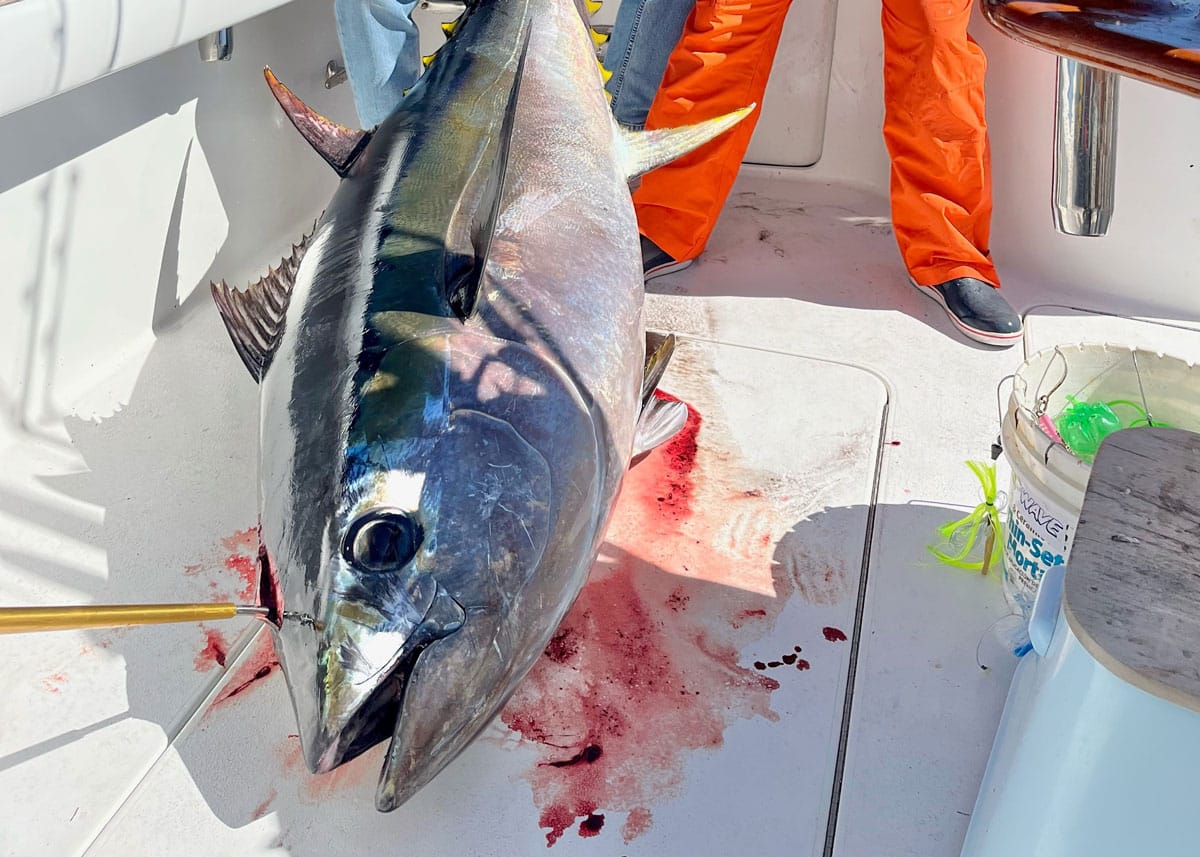
Targeting bigeye tuna takes a 100-percent all-out directed effort.
Few members of the Thunnus species are as difficult as bigeye to target. Timing matters, bathymetry matters, water temp matters, and the offerings you choose matter, too. You say you want to sink the gaff into one of these bluewater beasts? Make sure to consider all of these factors—and then get ready for some serious tug-of-war.
Timing the Bigeye Bite
This is one of those cases where time of day is a critical element. Sure, many species bite best early and late. But when it comes to bigeye you can troll the midday hours for months on end without ever getting a strike. Not only are dim conditions best, they’re virtually the only decent time to target bigeye. On the bright side (so to speak) these fish hunt in packs and when you hook up with one it’s common to get multiples. That means your good timing can pay off with a month’s worth of action packed into an hour of fishing.
Why is the timing so critical? To state the obvious, the bigeye gets its name from those oversized eyeballs. Those eyes are designed for hunting way down deep where very little light penetrates, and when bigeye are up near the surface—and might spot one of your offerings—they’re basically being blinded by the light. When the sun is hitting the horizon, however, the light is dim enough for them to see that bait and smash it.
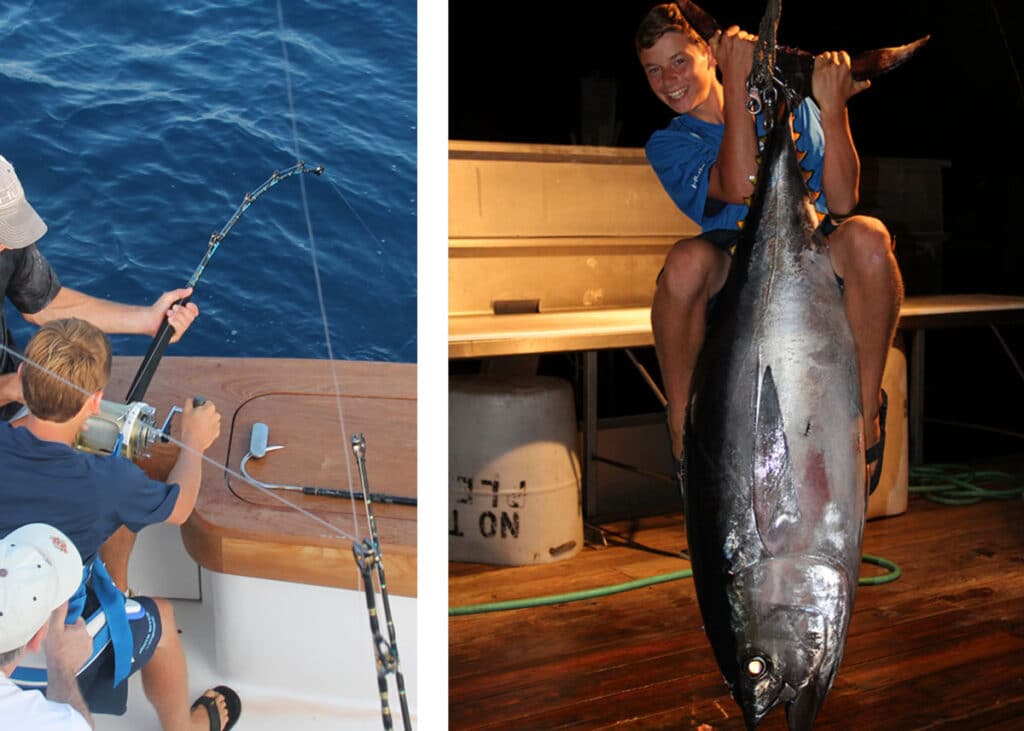
As a general rule of thumb the first and last hour of daylight are the times you need to target to hook into a bigeye. That said, don’t discount trolling in the inky darkness, too. Especially on moonlit nights trolling in the dark can prove productive.
Breaks and Bathymetry
Like most fish bigeye are often found around structure, and like most offshore pelagics the structure that attracts them is usually temperate or bathymetric in nature. When it comes to temperature breaks bigger and more abrupt is better, but even minor-league changes of a degree or so can focus the fish along a water barrier. This is especially true if the breaks are oriented along a bathymetric change like a canyon edge, shelf drop-off, or pinnacle, within their preferred 800’ to 2,000’ depth range. Often more critical than the temperature change itself, however, is the presence of clean blue water. This is one species that isn’t in love with green water, but a break where the colors abound is often where you’ll find the bait, and thus the bigeye.
As is true for virtually all pelagics, you’ll catch more fish if you dial up SatFish and do some homework before you leave the dock. Study up on where those breaks and boundaries intersect with bathymetric structure prior to every trip. SST alone without bathymetric detail might help a bit, but to stack the deck in your favor you’ll want to go to the charts on SatFish, zoom in tight, and see where the temp changes coincide with physical structure.
Tempting Pleasures
Okay: you’re in the right place at the right time. What goes over the side? On average bigeye are going to be heftier than yellowfin, and it’s rather uncommon to encounter them much below the 100-pound mark. Accordingly, offer up a significant meal. Ballyhoo should be the biggest horses you can find, generally run on an Ilander, Joe Chute, or similar lure with a three- to six-ounce head. Having a couple of spreader or splash bars in the water is a good move, too, first because the bigeye will hit them but second because the commotion they cause helps bring the fish up close. Diving plugs, like the classic Marauder in 8.5” or 10.5”, can also be surprisingly effective on bigeye. Plastics prove productive for some, too, when adding a 10” Hogy, Boss BKD, or similar eel-style tails behind an Ilander. Again, with all of these offerings don’t put out the little stuff—go big.
Speaking of big: same goes for the rigs you’ll use when targeting bigeye. 30s and smaller don’t even belong in the water. 50s will get the job done (not that it will be easy) and 80s are not overkill for these fish. Bigeye don’t just tend to be larger than yellowfin, most anglers who have gone toe-to-toe with them would also agree that they also fight harder. Go under-gunned and you can plan on getting spooled or breaking off.
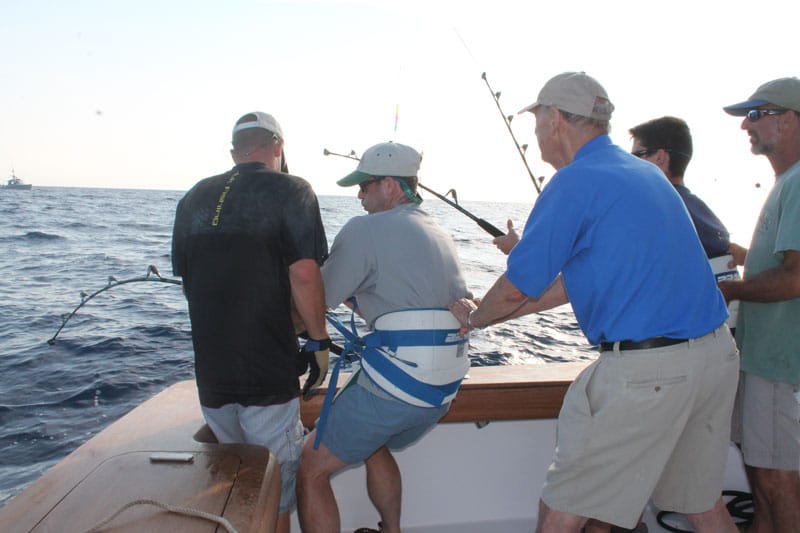
Above and beyond all else, when you’re on the hunt for this species keep a sharp eye out for pilot whales. Pilot whales dive down deep to feed on the same favorite food as the bigeye: squid. The big difference is that pilot whales need to return to the surface to breathe about every 15 minutes, so they’re far easier to spot than any tuna fish. When you spot a thick flock of ‘em, you know there’s a high probability of finding bigeye in the same area—and hopefully, you have a good chance of getting into a serious battle of tug-of-war.



